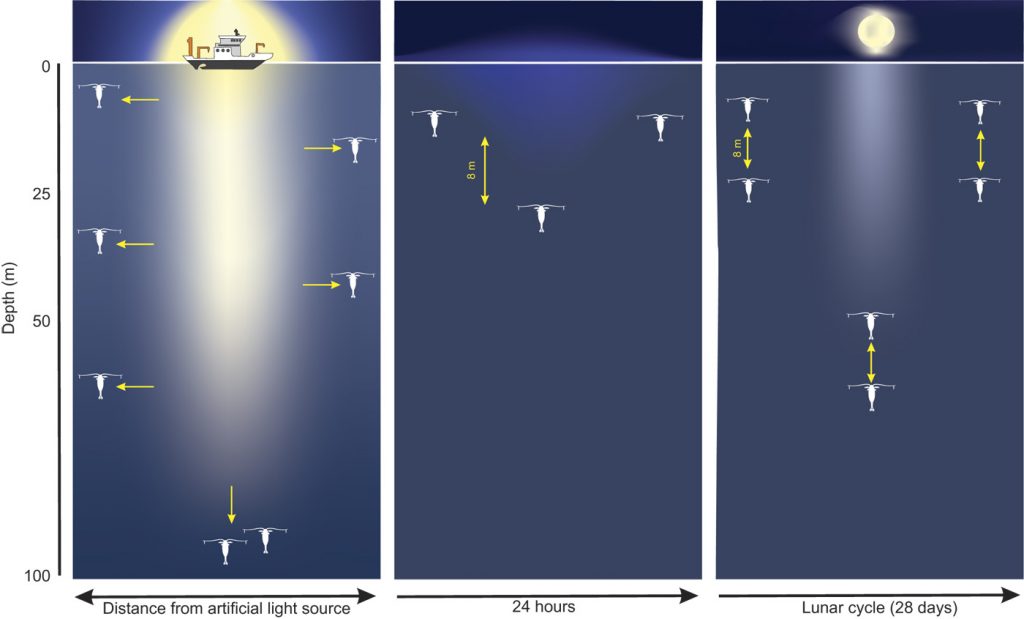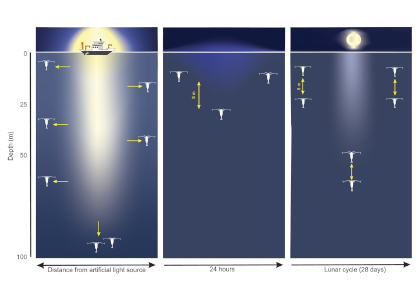When designing sampling we make generally accepted assumptions that what we collect is representative of what is “normal” or naturally occurring at the place, time, and depth of collection. However, a recent study in Science Advances revealed that this might not be true. During round-the-clock shipboard sampling, lights used at night can actually be a form of pollution that disrupts the diel cycle of zooplankton vertical migration.

Effect of light pollution on krill from a ship (left), diel vertical migration in natural dark conditions (middle) and effect of moonlight (right). Figure by Malin Daase (UiT).
Using a Autonomous Surface Vehicle the authors documented zooplankton behavioral patterns of light avoidance never previously seen. The study compared results from high Arctic polar night (unpolluted light environment for an extended time), to near ship samples. During months of near constant darkness in the Arctic, there was still a diel vertical migration of zooplankton limited to the upper 30 m of the water column and centered around the local sun noon. Contrasting the results from light-polluted and unpolluted areas, the authors observed that the vast majority of the pelagic community exhibit a strong light-escape response in the presence of artificial light (both ship light and even headlamps from researchers in open boats). This effect was observed down to 100 m depth and 190 m from the ship. These results suggest that artificial light from traditional sampling platforms may bias studies of zooplankton abundance and diel migration within the upper 100 m. These findings underscore the need for alternative sampling methods such as autonomous platforms, particularly in dim-light conditions, to collect more accurate and representative physical and biological data for ecological studies. In addition to research cruises and sampling, anthropogenic light pollution from predicted increases in shipping, oil and gas exploration, and light-fishing are anticipated to impact the diel rhythms of zooplankton behavior all around the globe.
Authors:
Jørgen Berge (Norwegian University of Technology and Science; UiT The Arctic University of Norway)
Martin Ludvigsen (Norwegian University of Technology and Science; University Centre in Svalbard)
Maxime Geoffroy (UiT The Arctic University of Norway, Memorial University of Newfoundland)
Jonathan H. Cohen (University of Delaware)
Pedro R. De La Torre (Norwegian University of Technology and Science)
Stein M. Nornes (Norwegian University of Technology and Science)
Hanumant Singh (Northeastern University)
Asgeir J. Sørensen (Norwegian University of Technology and Science)
Malin Daase (Norwegian University of Technology and Science)
Geir Johnsen (Norwegian University of Technology and Science; Norwegian University of Technology and Science)




